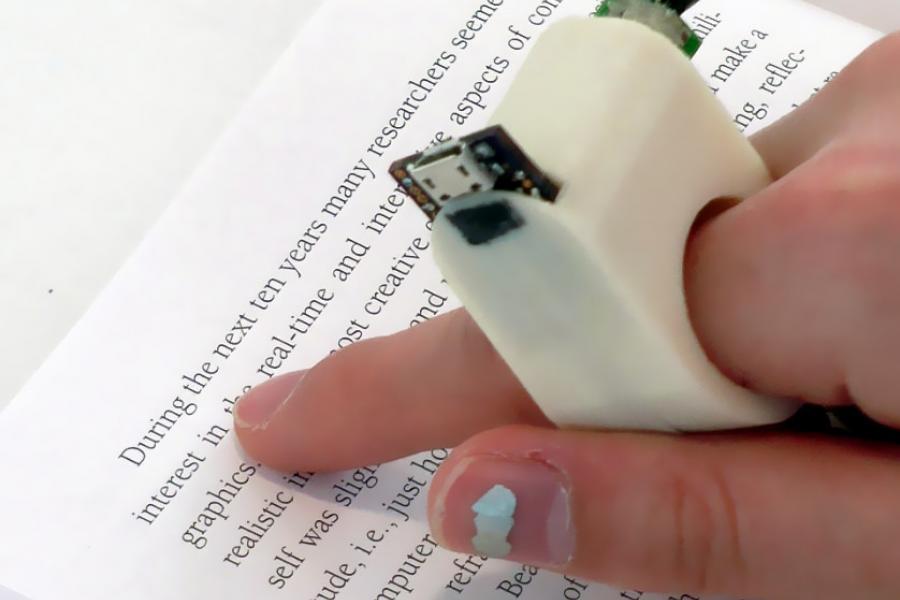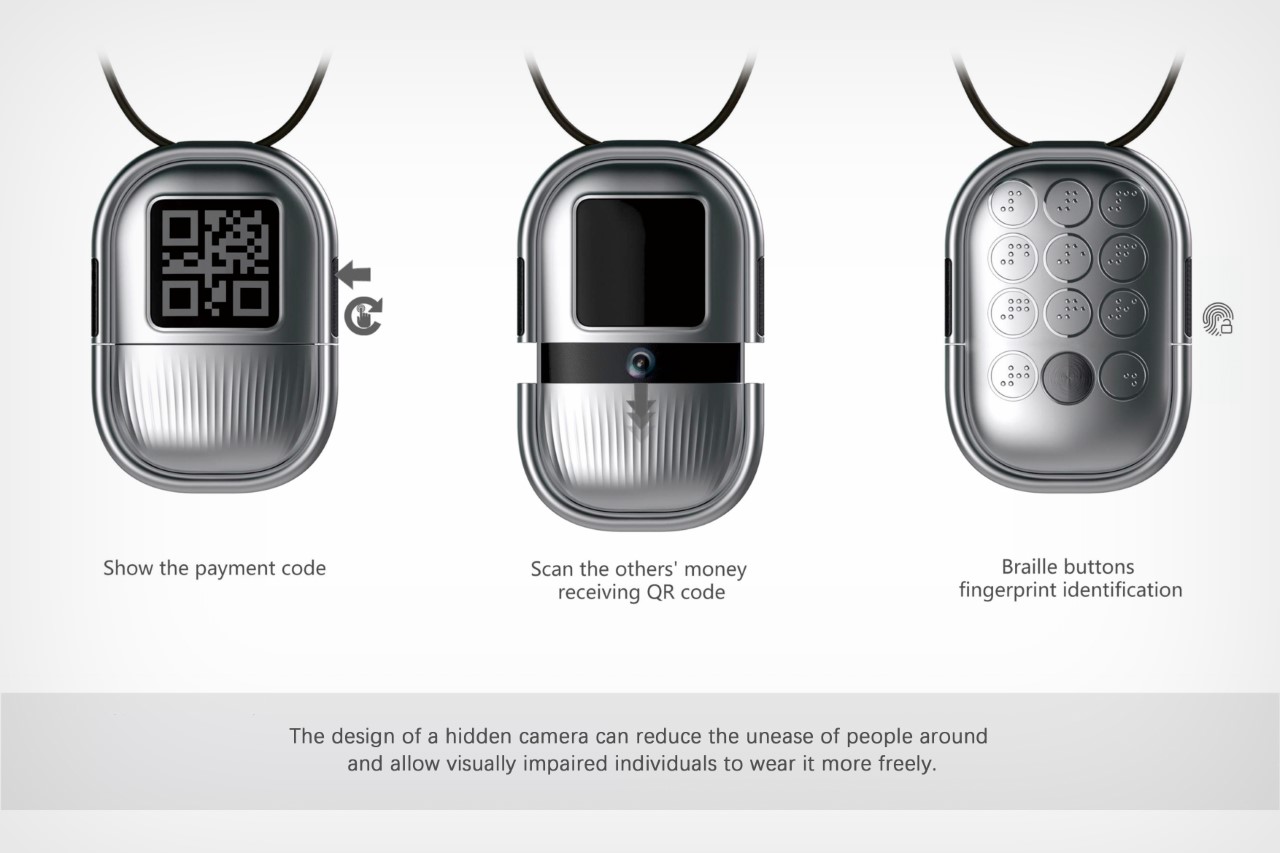Discover Cutting-edge Tools Made for the Visually Damaged
The growth of innovative devices for the aesthetically damaged stands for a considerable development in access and self-reliance. Technologies such as clever glasses with AI capabilities and mobile applications designed to supply auditory summaries are reshaping day-to-day experiences for users.
Smart Glasses for Navigation

Smart glasses developed for navigation are reinventing the means aesthetically impaired individuals connect with their setting. These sophisticated tools utilize a combination of camera modern technology, expert system, and auditory comments to supply real-time information regarding surroundings. By employing obstacle discovery systems, clever glasses can inform users to possible risks, making it possible for more secure flexibility in both familiar and unknown setups.
The integration of GPS innovation even more improves navigation capabilities, permitting users to obtain auditory instructions as they move. This hands-free method not only cultivates self-reliance but likewise encourages aesthetically impaired people to navigate city landscapes with increased confidence. Furthermore, lots of wise glasses are furnished with functions that recognize landmarks and road indications, offering contextual details that boosts the individual experience.
In addition, the development of these gadgets is constantly progressing, with firms working to boost the precision of item acknowledgment and broaden the variety of navigational functions. As wise glasses end up being much more budget-friendly and available, they hold the potential to considerably change daily life for visually impaired individuals. Eventually, these cutting-edge tools represent a crucial action towards inclusivity, offering improved mobility and a higher sense of freedom for people browsing the globe around them.

Mobile Apps for Daily Living
Just how can mobile applications boost the every day lives of aesthetically impaired people? Mobile applications are changing the way visually impaired users navigate their environments, manage daily jobs, and access info. These applications supply important assistance via different capabilities, fostering self-reliance and boosting quality of life.
A number of cutting-edge mobile apps are created especially for day-to-day living. Apps like Be My Eyes link aesthetically damaged customers with sighted volunteers using video clip calls, permitting them to get real-time help with jobs such as reading labels or navigating strange spaces. Seeing AI, established by Microsoft, uses fabricated intelligence to describe environments, reviewed message, and identify items, effectively changing a smartphone right into an effective tool for day-to-day help.
Additionally, navigating applications customized for the visually impaired, such as Aira and BlindSquare, provide audio-based instructions and environmental details, allowing customers to traverse their environments securely and with confidence. Past navigation and instant support, mobile apps also sustain organization and task administration, with attributes that aid customers establish tips, develop to-do lists, and track consultations. In summary, mobile applications act as indispensable resources, equipping visually impaired individuals to lead more independent and fulfilling lives.
Wearable Technologies for Assistance
Empowerment through technology is significantly evident in the realm of wearable tools made to aid aesthetically damaged people. These cutting-edge devices incorporate flawlessly right into day-to-day life, boosting navigating and supplying necessary responses to customers. For example, smart glasses equipped with electronic cameras can check out and recognize faces message out loud, enabling individuals to engage more with confidence in specialist and social settings.
Another notable innovation is the usage of haptic feedback systems in wearable devices. These systems make use of resonances or other responsive signals to communicate information concerning the individual's environment, such as barriers or adjustments in surface, improving flexibility and safety. Wearable modern technologies additionally consist of wristbands that link to smart devices, informing customers to notifications via subtle resonances, thus boosting connectivity without dependence on visual signs.
As these innovations remain to advance, they are not only improving freedom for visually impaired individuals yet likewise cultivating a greater feeling of addition in society. By linking the gap in between obstacles dealt with in day-to-day living and the potential for autonomy, wearable modern technologies act as critical devices in the quest for equality and empowerment for those with visual impairments.
Sound Description Tools
Sound summary tools play a critical role in improving access for visually impaired individuals, supplying them with the ability to engage with visual media. AI-powered visual aids. These devices offer narrated descriptions of crucial aesthetic elements in films, television shows, and live performances, guaranteeing that individuals can completely understand the context and feelings shared through visuals
Audio description can be integrated right into various platforms, including streaming services, cinema testings, and live theater. Numerous prominent streaming solutions currently consist of audio description as an accessibility function, permitting visitors to choose it conveniently. In addition to mainstream media, specialized apps additionally exist, supplying audio descriptions for art exhibitions, galleries, and other cultural events.
The performance of audio description hinges on the skill of the narrators, that need to communicate aesthetic information succinctly without detracting from the original sound. Technologies in this area are likewise paving the way for more individualized experiences, where individuals can adjust the level of information and pacing according to their preferences.
Braille Innovations and Gadgets
Braille technologies and devices have substantially changed the means aesthetically damaged people interact with text and information. Modern developments have led to the advancement of flexible tools that improve literacy and freedom amongst individuals.
Additionally, mobile Braille notetakers incorporate typical Braille input with modern-day capabilities, promoting note-taking, scheduling, and record editing and enhancing on the move. Braille displays and notetakers. These compact devices often include text-to-speech capacities, bridging the gap between Braille and auditory details
In addition, ingenious Braille printers have actually arised, enabling customers to create Braille labels, documents, and instructional anti glare glasses for night driving products effectively. This ease of access promotes greater participation in expert and educational settings, eventually promoting inclusivity.
Furthermore, study into wise Braille technologies remains to go right here expand. Instruments that include man-made intelligence are being discovered to offer real-time navigation aid and contextual info, enhancing the customer experience in diverse setups. On the whole, these developments reflect a dedication to equipping visually damaged people with technology, guaranteeing they can easily gain access to and involve with the world around them.

Conclusion
The innovation of innovative tools for the visually damaged dramatically enhances independence and lifestyle. Smart glasses, mobile applications, wearable modern technologies, audio summary devices, and Braille developments jointly equip people by giving crucial navigating support, environmental recognition, and boosted analysis experiences. These innovations not only foster better incorporation yet additionally promote autonomy in day-to-day tasks, ultimately adding to an extra equitable and accessible culture for aesthetically impaired individuals. Continued development in this field holds promise for further improvements.
As smart glasses come to be more easily accessible and affordable, they hold the potential to substantially transform day-to-day life for aesthetically impaired individuals. Mobile applications are reinventing the method visually impaired customers browse their environments, manage everyday jobs, and gain access to information. Applications like Be My Eyes connect aesthetically impaired customers with sighted volunteers through video clip telephone calls, allowing them to get real-time aid with tasks such as reviewing labels or browsing unknown rooms.Furthermore, navigating applications customized for the aesthetically damaged, such as Aira and BlindSquare, provide audio-based instructions and environmental info, enabling individuals to traverse their environments securely and with confidence.The innovation of Bonuses innovative devices for the visually impaired dramatically improves freedom and high quality of life.